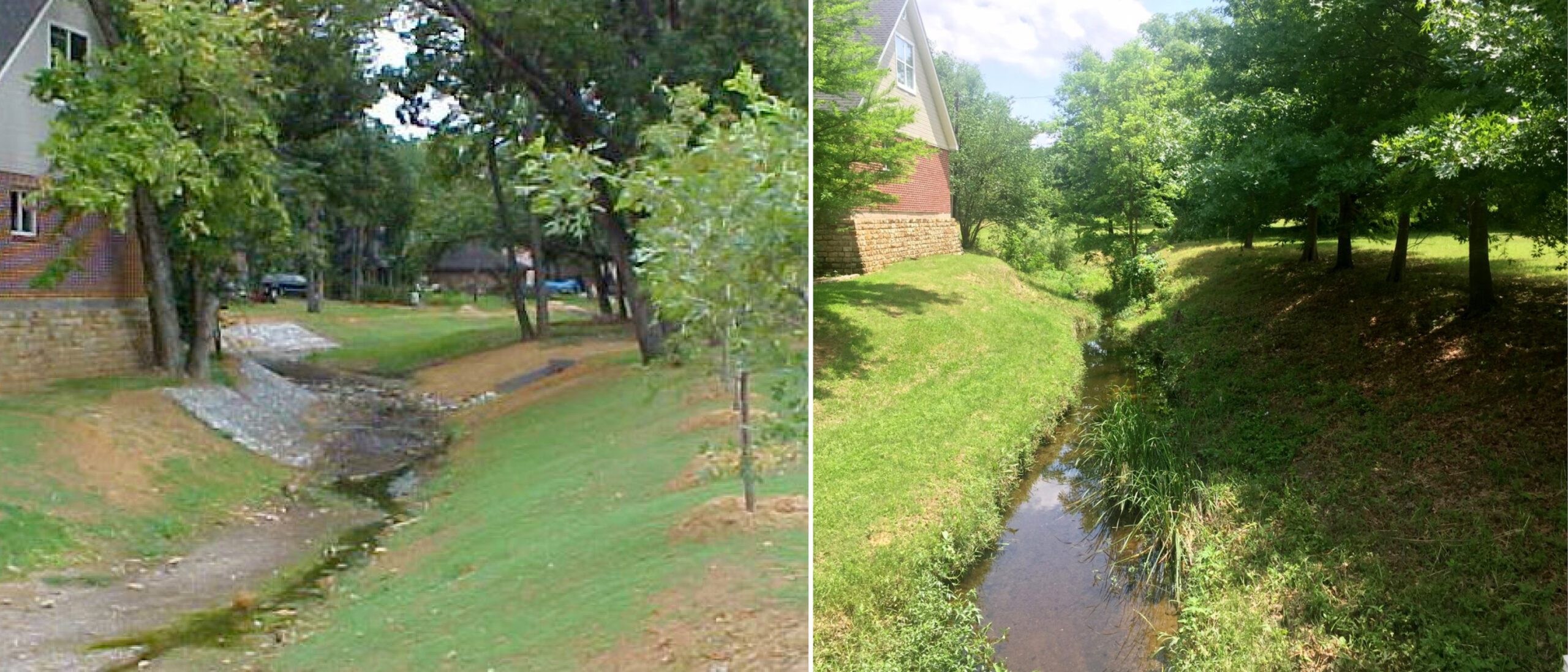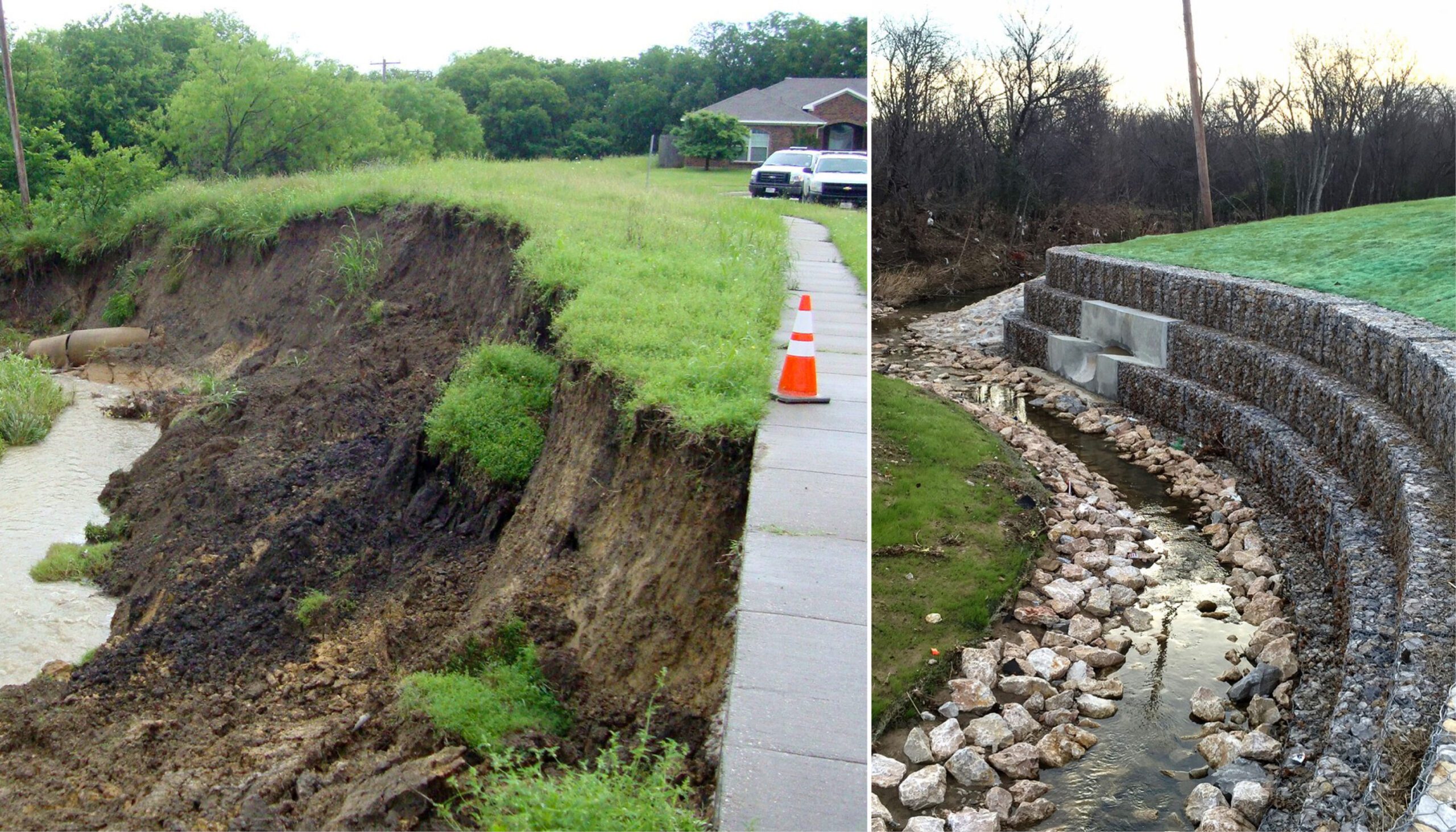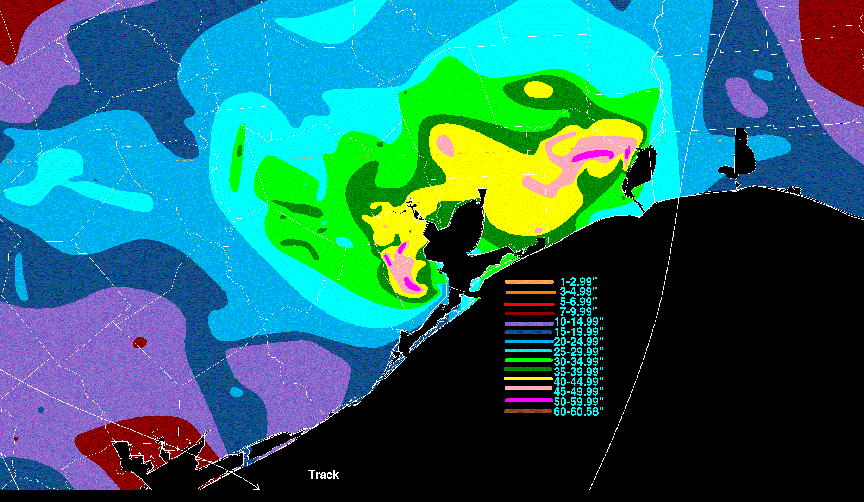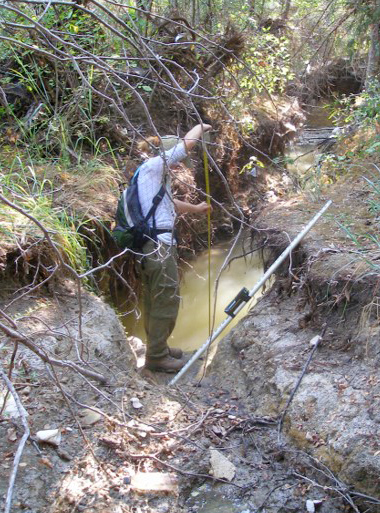What You Need to Know About Stream Erosion, Stabilization and Restoration
Take a step back in time for a moment and imagine yourself trekking across Plano, Texas, 150 years ago. If you prefer a South Texas suburb, settle in Katy. Or head north to Oklahoma City.
Prairie lands exist as far as you can see. Tall grasslands weave back and forth in the breeze, while beautiful trees and wildflowers dot the landscape. You come across a quiet, trickling stream that is as natural and stable as you’ve ever seen.
For a hundred years, the stream is mostly undisturbed as farms and ranches take shape around it.
But then development begins to occur—major development. High-tech industries move in and thrive, prompting the construction of more industrial buildings, more homes, more roadways, more concrete, more everything.
Suddenly, much of that fertile ground that for decades allowed rainfall to infiltrate is gone—covered up. More stormwater runs off into the creek. These higher flows have more velocity that over time pick up the small pebbles and soil pInsights and deposit them downstream. Erosion is changing the characteristics of the stream right before your eyes. The creek is becoming less stable.
Now the fences and trees surrounding neighborhood homes that were built right next to the creek decades earlier are falling into the ever-widening channel, creating a big problem that was unforeseen at the time of development.
The Erosion Process
Stream bank stabilization or stream restoration projects that solve erosion problems are common now. The first step is analyzing what exactly is causing the erosion to occur, then proposing stable, long-term solutions.
As a channel starts eroding, it begins a downcutting effect as particles are moved from sections of the channel with higher velocities to downstream areas where velocities are low. The channel has begun a geomorphologic process to try reaching a new equilibrium state. The water moving through the channel wants to flatten it out, and it does this by cutting down the stream bed and digging deeper with a constant progression from downstream to upstream.
Eventually, it reaches a point where it gets to a hard substratum, and the processes to cut down have changed to a new process. At that point, a once narrow, incised channel starts to widen and meander to accommodate higher flows that it is receiving. As the flows continue to increase with even more impervious development, the stream erosion evolution continues as it again cuts deeper, wider and flatter to reach a new equilibrium state. These natural channel processes can persist over decades and result in problems to adjacent properties unless addressed.
It wasn’t uncommon for development to occur all the way to the edge of the creek from the mid-1900s into the 1980s. In fact, those were considered prime lots in most areas. However, the soil material along the creek bed is often not stable, especially if vegetation is lost. Developments that cut down all the trees and maximized developable land—perhaps to get a better view of the creek—may now be paying the consequences because there is nothing there to hold the banks together as the natural channel processes evolve.
Halff has engaged in projects large and small that try to solve various stream erosion issues. What are these primary issues?
-
-
A natural stream is encroaching on somebody’s property.
-
An eroded stream is near and undermining a roadway or bridge.
-
The stream is exposing a utility. Erosion affects utilities that run parallel to a creek, including exposing sanitary sewer lines. This exposure can reduce stability that can cause breaks, thus allowing sanitary sewer flows into the creek.
-
As downcutting occurs, a headwall is no longer supported by the ground underneath and can be separated from its storm drain.
-
The erosion is affecting a utility crossing the creek. Numerous issues can occur—damage to supports and straps; pipe exposure; buildup of debris on the upstream side; and more exposure of unsupported sections of pipe, making the utility’s infrastructure less stable.
-
Hard-Armor and Soft-Armor Solutions
Solutions for bank stabilization include soft-surface armor or hard-surface armor. Channel grade stabilization solutions primarily include hard-surface armor.

Soft-armor solutions can include grass and other vegetation used on flatter slopes. It is essential that vegetation be established for it to be successful. Therefore, biodegradable or permanent turf reinforcement matting is often implemented with seed spread underneath. Sometimes sod is used, and other times adjacent vegetation that thrives in the stream is transplanted to the bank areas needing stabilization. One detriment is soft-armor solutions take time to strengthen, so they have to be able to withstand erosive velocities prior to vegetation establishment. Tree canopies along stream corridors can make it difficult for vegetation to establish in shaded areas.
Hard-armor solutions to protect against future erosion can include gabions, precast block retaining walls, rock riprap and rock chutes for channel grade stabilization.

Engineers look for locations in the creek where water velocities are high and flows are damaging, often on the outside of a bend, to implement stream stabilization solutions. Sometimes a solution can be built in the creek bed to redirect high velocities to less-impacted stream areas so they aren’t scouring a utility line or a property owner’s slope.
One way to control the downcutting effect is to construct hardpoints along the channel at key locations. A hardpoint such as a culvert, dam or rock chute will stop the migration of the downcutting effects and prevent the channel from incising upstream, thus controlling the current flowline and top of channel limits.
The Future of Stream Bank Stabilization
Many challenges exist when trying to stabilize or restore a creek channel to protect utilities, homes or other infrastructure. Are the necessary materials available, such as an abundance of rock from a quarry? Does the contractor have the necessary experience working in a creek? How will stream water flows be managed while the improvements are being made?
Cities can get ahead of these issues by establishing erosion hazard setbacks in such a way that stream erosion won’t impact new developments. Implementing an erosion ordinance can also help cities to better prioritize addressing public erosion needs over private erosion issues. Voluntary buyouts may be a solution for individual properties where a public improvement cannot be implemented and where private improvements are too costly to address the individual need.
In the end, stream stabilization and reconstruction efforts are ultimately the result of increased development in our growing communities over time. Fixing today’s problems and having the foresight to eliminate problems in the future is an ongoing challenge as population increases.
The water, after all, doesn’t stop.
For more information about the Local Infrastructure team at Halff, please visit our Local Infrastructure Services page.





